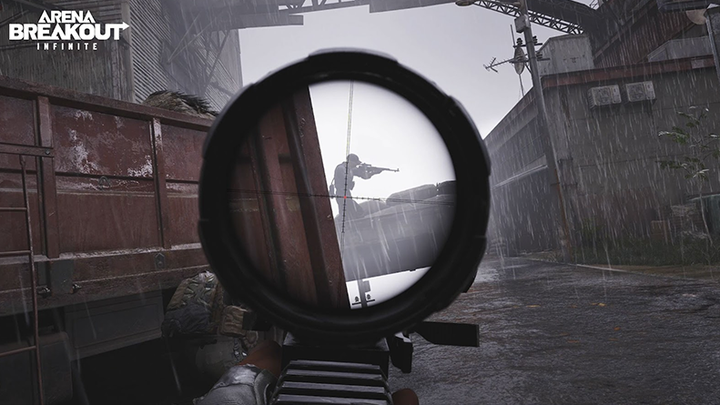Green Hell is a Most Accurately Named Survival Game
I spent my first day in the Amazon building a shelter and a campfire. It wasn’t much to write home about, but I was proud of my achievements until I realised how parched I was. I searched late into the night and finally found a water hole. By that point, dehydration was setting in, so I didn’t much care that it was dirty. That was my first mistake. The parasites that infested my stomach were ravenous, and my meagre rations weren’t enough to sate them. I died of starvation in my sleep early in the morning.
With just one small change, Fatboy Slim and Riva Starr’s 2013 banger comes to define Green Hell: “Eat. Sleep. Die. Repeat.” The refrain pulsates with energy—insistent, mesmerising—and the same is true of Creepy Jar’s debut offering.
Survive, the game demands. Hunt, gather, build, and live. Green Hell taps into the process of refinement that this core loop has enjoyed across the past few years, with the result being a set of engrossing, finely tuned mechanics that await the final piece of the puzzle: the story.
A kind of prologue is already present. Players arrive in the Amazon rainforest in the company of a woman trying to make contact with a lost tribe. A slow start acclimatises players to the basic necessities of food, water, and health while at base camp. Then, more than a month after the arrival of the possible philanthropists (though only about an hour in real time) comes a cry for help, and the tutorial ends.
Anyone who has already played ARK: Survival Evolved, Conan Exiles, or their ilk should feel somewhat at home in Green Hell. Perhaps the most notable change from those forebears is the shift to a realistic setting. The character is no fantasy hero with the ability to slay fell beasts at a single blow. Rather, he is an average Joe, prone to infection from untreated wounds, poisoning from tainted food, and death from even the slightest sign of adversity.
The abandoned camp was the first sign of civilisation I’d seen in days. As you can imagine, I ran towards it with glee and was rewarded with chips, canned food, painkillers, and even a new spear. It’s the closest thing you can imagine to winning the lottery out here. The best thing of all, though, was the water purifier. Drinking from the rivers made me horribly sick. I waded out with a saucepan I found to fill up, and felt a horrible stinging in my legs almost straight away. By the time I got back to shore, my legs were severely lacerated. Bloody piranhas. Worse, I hadn’t seen a Molineria plant in a while and had no bandages on me. I wasn’t able to find a way to treat myself before infection set in, and that spelt the end of my adventure.
A lack of sleep means drastically reduces energy levels. Starvation and dehydration bring drops in health. Leeches and uncomfortable sleeps take a toll on sanity. The sheer number of moving parts that players must be aware of in their quest for survival is almost terrifying, as negligence of even one can have dire effects.
Moreover, Creepy Jar seems to have no interest in making things easy. The abundance of animals ensures a constant supply of protein, though medicinal herbs and edible sources of carbohydrates and fats are rather sparse. Moreover, the abbreviated day/night cycle and frighteningly rapid metabolic rate of the character leaves next to no downtime.
For all those struggles, survival is as survival does. As is common in the genre, maintaining health and energy becomes rhythmic once the player is accustomed to the demands and has set up a base of operations. The first two Early Access updates (animals and water) focused on expanding those means of survival and world interaction, while the latest doubled down on combat.
Aside from certain aggressive animals, the primary enemies are the native tribespeople, and the fights can get tough. The natives are smart, generally well-equipped, and able to telegraph the player’s actions with almost preternatural awareness. Moreover, they hit hard, though armour and traps can help mitigate their threat.
What was that poking around my raft? Bigger than any animal I’d seen so far, and those white splotches had to be paint. A native. I’d already stumbled onto one and been almost killed. This time, I’d be the one with the advantage. I crouched down and snuck towards him, spear at the ready, hoping he wouldn’t hear me clumping through the underbrush. I launched my spear, embedding it through his guts, but he had the fortitude of an ox. He stumbled, then let fly an arrow before I’d realised I hadn’t killed him. It caught me in the side. I saw red. My machete flashed, but he was like a ballerina, dancing out of my way. His second arrow ended me.
For some players, the cadence of survival and the push towards ever bigger buildings and better equipment will be enough. Indeed, comments on the game’s Steam updates suggest that most fans are content with the structure, as the most in-demand feature is cooperative play, which is set to arrive as free DLC after the full launch. For anyone who wants a bit more structure to their play, the Challenges offer a stopgap until the story mode releases later this year.
Each of the Challenges has a straightforward goal: build a campfire or raft, hunt a set number of animals, collect radio parts from tribal camps. Straightforward does not mean simple. The quests offer a three-day time limit, though the threats to safety from Survival Mode remain present. Balancing health maintenance with collecting the exorbitant resources required for completion ensures that the mode is well termed.
Pertinently, the Challenges may also suggest the structure of the story yet to come, as the premise already in place indicates a rescue mission. Even if this surmise is incorrect, the presence of a narrative promises to unify the mechanics already in place, forcing players to explore and innovate in ways that survival may not press them to. On the other hand, the story may well go overlooked and ignored, and that will be of little moment because Green Hell is engaging enough without it.
The deep health and wellbeing mechanics stand out in Green Hell, emphasising the survival experience in a justifiable, meaningful way. While that enables the game to stand out from its peers in the genre, the true star is the jungle setting. The biodiversity is not nearly as extensive as it is in real life, but as far as being a simulacrum, this virtual Amazon is convincing enough; all that is missing is the oppressive heat and humidity. Even without the atmosphere, Creepy Jar is well on the way to ensuring players delight or despair during their experience with this mostly aptly named game.















